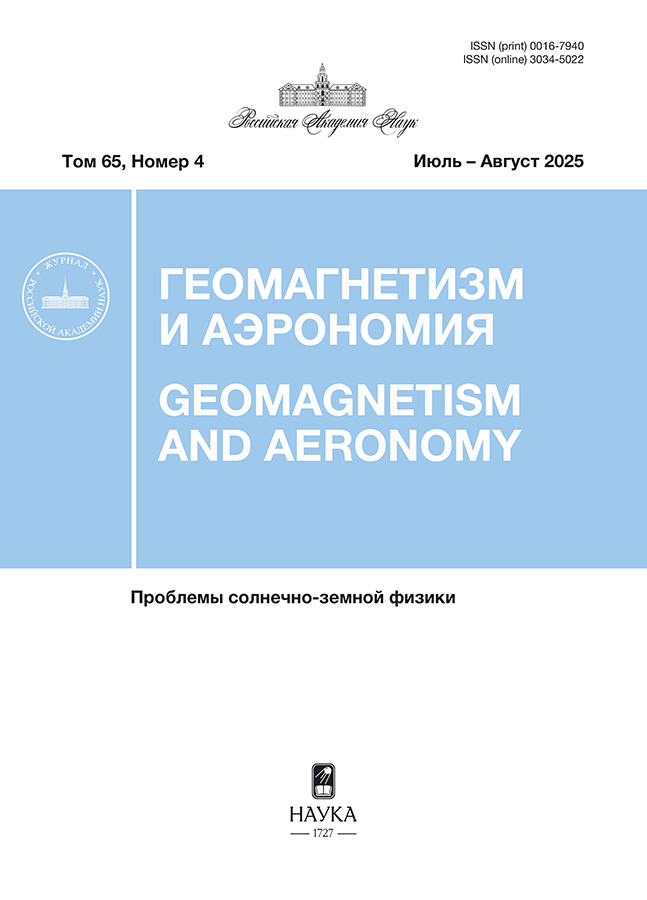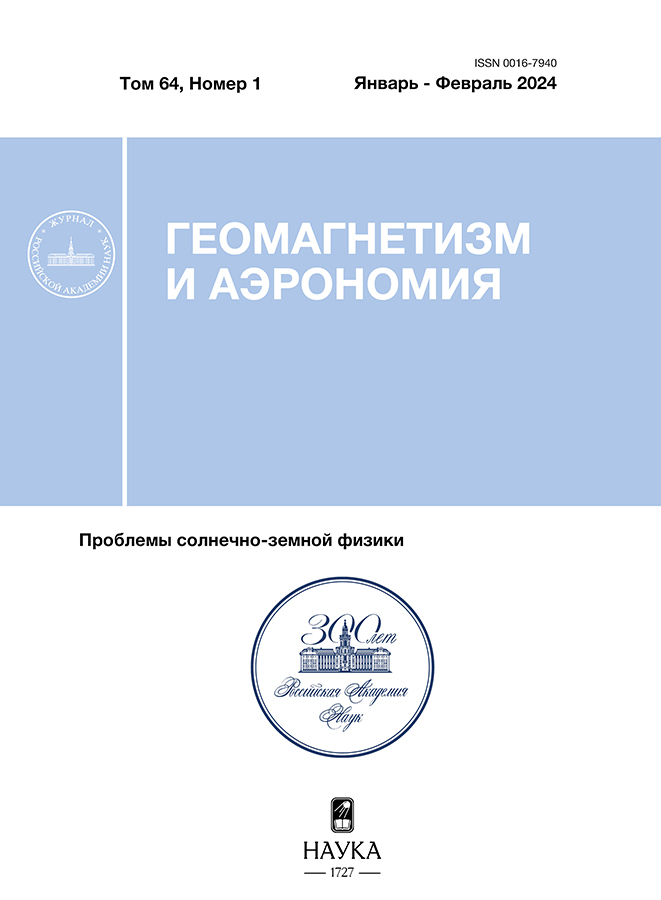Simulation of spectral observations of an eruptive prominence
- Authors: Kupryakov Y.A.1,2, Bychkov K.V.2, Belova O.M.2, Gorshkov A.B.2, Kotrč P.1
-
Affiliations:
- ASCR
- Moscow State University
- Issue: Vol 64, No 1 (2024)
- Pages: 23-28
- Section: Articles
- URL: https://permmedjournal.ru/0016-7940/article/view/650953
- DOI: https://doi.org/10.31857/S0016794024010031
- EDN: https://elibrary.ru/GREFDK
- ID: 650953
Cite item
Abstract
The paper presents the results of an analysis of observations of an eruptive prominence on the MFS and HSFA2 spectrographs of the Ondřejov Observatory (Astronomical Institute, Czech Republic) in the lines of hydrogen, helium and calcium. After processing the spectra, the integral radiation fluxes in the lines were determined and a theoretical calculation of the physical parameters of the plasma was carried out using a model in the absence of local thermodynamic equilibrium. A comparison of the observed and calculated values showed that the observed radiation fluxes in the lines can be explained in a model of stationary gas radiation taking into account the opacity in the spectral lines. To calculate theoretical fluxes, in some cases it was necessary to introduce radiation from several layers with different temperatures and heights. The calculated radiation fluxes agree with the observed ones with an accuracy of 10%. As a result of the simulation, the main parameters of the prominence plasma were obtained: temperature, concentration, etc. The values of radiation fluxes in the spectral lines indicate the inhomogeneity of the emitting gas, and there may be regions next to each other whose temperatures differ by an order of magnitude.
Full Text
About the authors
Yu. A. Kupryakov
ASCR; Moscow State University
Email: jurij.kupriakov@asu.cas.cz
Astronomical Institute, Sternberg Astronomical Institute
Czech Republic, Ondřejov; Russia, MoscowK. V. Bychkov
Moscow State University
Email: bychkov@sai.msu.ru
Sternberg Astronomical Institute
Russian Federation, MoscowO. M. Belova
Moscow State University
Email: whitecanvas05122010@mail.ru
Sternberg Astronomical Institute
Russian Federation, MoscowA. B. Gorshkov
Moscow State University
Email: gorshkov@sai.msu.ru
Sternberg Astronomical Institute
Russian Federation, MoscowP. Kotrč
ASCR
Author for correspondence.
Email: pavel.kotrc@asu.cas.cz
Astronomical Institute
Czech Republic, OndřejovReferences
- Белова О.М., Бычков К.В. Устойчивость нестационарного охлаждения чисто водородного газа относительно числа учитываемых дискретных уровней // Астрофизика. Т. 61. № 1. C. 119–130. 2018.
- Биберман Л.М. К теории диффузии резонансного излучения // ЖЭТФ. Т. 17. С. 416. 1947.
- Биберман Л.М., Воробьёв В.С., Якубов И.Т. Кинетика неравновесной низкотемпературной плазмы. М.: Наука, 378 с. 1982.
- Вайнштейн Л.А., Собельман И.И., Юков Е.А. Сечения возбуждения атомов и ионов электронами. М.: Наука, 142 с. 1973.
- Anzer U., Heinzel P. Prominence Parameters Derived from Magnetic-Field Measurements and NLTE Diagnostics // Sol. Phys. V. 179. № 1. P. 75–87. 1998. https://doi.org/10.1023/A:1005000616138
- Holstein T. Imprisonment of resonance radiation in gases // Phys. Rev. V. 72. P. 1212—1233. 1947. https://doi.org/10.1103/PhysRev.72.1212
- Holstein T. Imprisonment of resonance radiation in gases. II // Phys. Rev. V. 83. P. 1159—1168. 1951. https://doi.org/10.1103/PhysRev.83.1159
- Johnson L.C. Approximations for collisional and radiative transition rates in atomic hydrogen // ApJ. V. 174. P. 227—236. 1972. https://doi.org/10.1086/151486
- Kotrč P., Bárta M., Schwartz P., Kupryakov Y.A., Kashapova L.K., Karlický M. Modeling of H-alpha Eruptive Events Observed at the Solar Limb // Sol. Phys. V. 284. № 2. P. 447—466. 2013. https://doi.org/10.1007/s11207-012-0167-6
- Labrosse N., Heinzel P., Vial J.-C., et al. Physics of Solar Prominences: I-Spectral Diagnostics and Non-LTE Modelling // Space Sci. Rev. V. 151. P. 243—332. 2010. https://doi.org/10.1007/s11214-010-9630-6
- Melendez M., Bautista M.A., Badnell N.R. Atomic data from the IRON project LXIV. Radiative transition rates and collision strengths for Ca II // A&A. V. 469. P. 1203—1209. 2007. https://doi.org/10.1051/0004-6361:20077262
- Schwartz P., Balthasar H., Kuckein C., et al. NLTE modeling of a small active region filament observed with the VTT // Astron. Nachr. V. 337. № 10. P. 1045—1049. 2016. https://doi.org/10.1002/asna.201612431
- Schwartz P., Gunár S., Jenkins J.M., et al. 2D non-LTE modelling of a filament observed in the Hα line with the DST/IBIS spectropolarimeter // A&A. V. 631. P. A146 (12P). 2019.
- Seaton M.J. The spectrum of the solar corona // Planetary and Space Science. V. 12. № 1. P. 55—74. 1964.
- Vial J.-C., Engvold O. (eds) Solar Prominences. Astrophys. Space Sci. Lib. V. 415. 498 p. 2018. https://doi.org/10.1007/978-3-319-10416-4
Supplementary files














